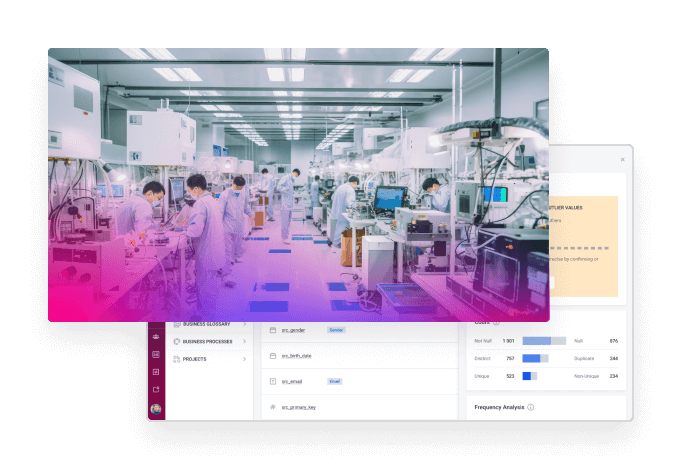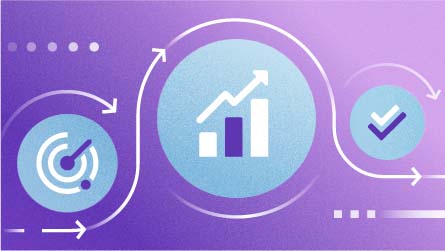70 - 90% of merger and acquisition deals fail [1], and integration [2] is one of the top reasons.
One important part of integration is data, and neglecting best practices before and after a merger can severely limit the outcomes and ROI of the deal. Granted, every merger will come with data challenges, but prioritizing data early and throughout the integration process will ensure a controlled data landscape and increase the chances of beneficial data synergies.
By following the right process, you can avoid
- Compliance issues
- Data quality issues
- Siloed IT organizations
- Incomplete views of customers, employees, and partners
… and many others.
In this article, we outline the steps to prepare your data for an M&A, along with advice on how to deal with it in post. Read on to find out the best data practices pre and post-M&A.
The typical data pains of M&As
Organizations that go through the M&A process without giving proper attention to enterprise data will usually experience a set of pains. You can review them in the table below, along with their consequences.
| Pain | Consequence |
|---|---|
| Siloed data/IT organizations with different business languages and terminology | Complicates the integration of data from separate entities for analysis and reporting. Metrics can have the same names, but they might be calculated from semantically different data. |
| No single view of customers | Missed sales opportunities and/or poor customer experience. |
| No single view of employees | HR leadership has trouble assessing the size of the combined workforce, their locations, salaries, seniority, etc., and reporting on these metrics from a global perspective. |
| Lack of understanding of the data landscape and data flows | When business or IT changes are required, their impact on business outcomes is unclear. |
How to prepare data and environment before M&A
You should always think about integrating data and processes around an M&A before it takes place. Otherwise, you will run into one or more problems listed in the table above.
Companies that realize the most value from M&As start their thinking early about the necessary investment and develop an IT integration hypothesis, according to Bain & Co. Their research also points out that 50% of realized business synergies depend on successful systems & process integration. Conversely, a poor strategy will only make the IT landscape more complex and increase costs over time.
That is why proper IT, processes, and data due diligence is so important.
#1. Understand the IT and process landscape
If you want to accurately estimate the impact of the merger, you first need to understand the IT and process landscapes of the two parties. You will gain insights about similarities and differences and better prepare your integration strategy. It will be easier to make decisions like:
- What to integrate and what not to integrate?
- Which systems to select as the winner for the merged business?
- Which systems should be sunset and their data migrated?
- Which systems to integrate first?
- Which distinguished capabilities can be adopted from one company to the other?
You will also be able to estimate the costs of integration better.
Make an inventory of the following entities for both parties of the merger:
- Data domains and business capabilities
- Systems
- Data tables
- Business processes
- Process owners
- Data owners
- Critical enterprise reports & business models
- KPIs
- Data flows between systems (data lineage)
- How do each of these relate?
You might end up with something like the following lineage diagram:

#2. Set up DQ metrics in line with system requirements
After step 1, you will likely decide that some systems will be merged. That means data migration. For example, if you merged with a company that has a well-functioning salesforce CRM, you might decide to leave Pipedrive and migrate all of your data to Salesforce.
For the data migration to be successful, you have to ensure that target systems will get data in line with their requirements. Source system data might have different formats and data types, which could lead to the data becoming invalid in the target system. Assess source data quality and:
- Collect missing data.
- Fix errors that have been detected.
- Set up data cleansing processes as a component between the source and target systems.
- Set up data quality monitoring of the target system after the merger is complete.
Performing these steps and ensuring data quality will let you migrate data reliably and efficiently—and start getting the value of synergies faster.
#3 Identify PII in both parties
Managing PII is a critical step that can be taken after all metadata management activities (listed in step one) have been done, and data quality has been ensured. For both parties:
- Identify PII in the systems
- Review data privacy practices, privacy policies (for customers and employees, for example), consents, and regulations the data is subject to.
- Understand where PII is used and how it flows throughout the data landscape.
Based on this, it will be clear whether the data of the acquired company can be easily integrated into the target data landscape and how it can be used. If the acquired data is subject to stricter policies than what the purchaser currently complies with, the data might need to stay segregated.
#4 Analyze the customer portfolio overlap
As part of the pre-merger due diligence, it is important to understand the business viability of the M&A.
To do that, understand which customers you have in common, and what products they have to estimate the cross-sell potential. In a B2C setup with many physical point-of-sale locations, you might want to do a POS proximity analysis.
Usually, this requires a lightweight MDM project to carry out data consolidation and analysis. After this exercise, you might want to develop this into a full-scale MDM project—especially if many of the data entry systems will remain as is on the acquired side.
Practical steps to maximize the value of data after an M&A
After the deal is complete, you can begin executing your integration strategy. You have already performed due diligence on the data landscape of both parties of the merger, created the integration plan, and estimated the workload.
The steps and practices below do not have to be executed in the exact order or completeness. They represent the best practices for ensuring data quality, accessibility, privacy, usability, and transparency. You should start with the activity that best corresponds to your data pains and business objectives.
Foundations
- Ensure that Data Management and Data Governance policies are in place and available for data consumers. Set up a repository accessible to everyone where they can read and understand policies and procedures related to data. This will make it easier for everyone to adhere to new and existing data management practices, preserving data quality and compliance on both ends of the merger.
- Implement Data Governance Strategy and Board in line with Change Management processes and IT Management standards to capture all required changes as BAU. Mergers mean a lot of change. Changes must be made with Change Management processes and tools in place. Having the processes documented and tools in place will let you know who to contact and what systems and data are affected if you want to change something.
- Ensure that SLDC is in place and all information is up to date in CMDB. Having up-to-date information about systems, interfaces, and IT services in a CMDB like ServiceNow or LeanIX will let you create the first version of data lineage.
- Catalog data in scope, including PII. Catalog at least Critical Data Elements in the domains that are part of the migration. Group the existing and acquired data by domain and business capability to get the full picture. This activity also assumes that you document (or update) your business terms to align with the data and business teams within the merged business and catalog data in line with these business terms.
- Ensure that Business Process Management is in place. Capture, visualize, and assign ownership to all business processes in a tool like Adonis to ensure complete metadata in your lineage maps.
- Build the full data lineage for required components. Collect all business and technical metadata related to previous steps and 'stitch' it with a data lineage component to show everything in one place (see the diagram above). The benefit to having a full data lineage is that you will be able to understand the root causes and impacts of changes much better.
Ensure data quality and get value from data
After you have set the foundations for the effective use of data, you need to focus on getting data into shape (and keeping it that way) for critical business processes, reports, models, and data products. After all, to get real benefits from the acquired data, it is necessary to integrate it. However, as we know, 88% of data integration projects fail or overrun their budgets because of poor data quality
- Extend data quality checks in line with requirements. Based on the migrated data and unpacked business processes, KPIs, and reports, set up required DQ rules not only for migrated data but at least for each critical data element (CDE).
- Implement data quality issue management. Set up the tools and processes necessary to detect and resolve data quality issues. This can take the form of data observability, where suspicious data parameters are reported and are then investigated and resolved by data engineers or data stewards. Alternatively, data quality monitoring set up in the previous step will produce regular reports about records that do not match the criteria within data quality checks.
- Consolidate master data in line with priorities and requirements. Set up an MDM Hub, determine the scope of the program (the systems involved), create matching and merging rules, and create a single south of truth for master data.In the case of customer data, you will get an updated Customer 360 view that covers customer relationships with the merged companies, including their products. You will also get the best version of their contact details and relationships with other customers.
- Start creating Data Products. After your data is under control and transparent, you may start building data products and ensure proper change management impact, avoiding duplication and with clear ownership and quality around setting up elements.
Examples of successful M&As
Raiffeisen Bank A.S. went through several mergers and acquisitions. After one-off data consolidation, they launched a full-fledged MDM solution to handle data consolidation in a future-proof manner. Read the full success story here.
If you are planning a merger or are feeling the consequences of unmanaged data after one, take a look at Ataccama ONE, a unified data management platform covering all critical capabilities for maximizing the value of your data.
[1] hbr.org/2020/03/dont-make-this-common-ma-mistake
[2] investopedia.com/articles/investing/111014/top-reasons-why-ma-deals-fail
data integration for
mergers & acquisitions






